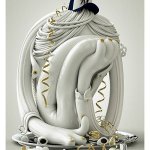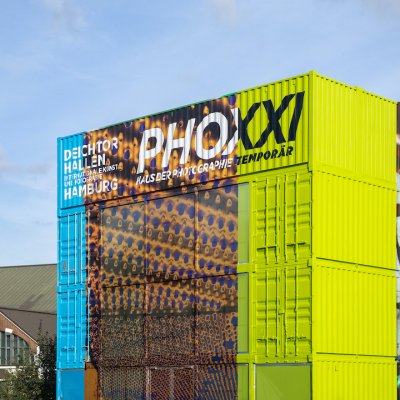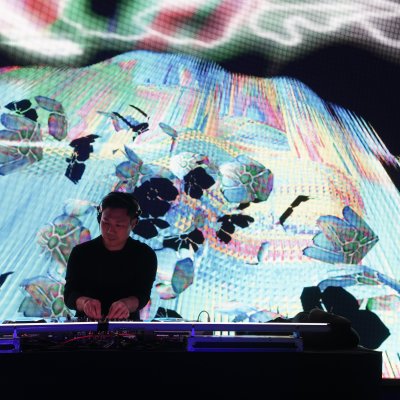Foregrounding character, the work of Berlin’s Pictoplasma, has turned out to be more than just anthropomorphism.
Now the world’s leading and largest festival and conference for contemporary character culture, what started out as a research project for a former animator has turned into an entire strand of events, including a separate, annual academy session of workshops and masterclasses and a New York edition.Incorporating the theories of images and encompassing all of the means to make characters come to life, Peter Thaler and Lars Denicke invite us in to the fantastical, wonderfully creative, unusual world of Pictoplasma.
You describe Pictoplasma as an event geared around "characters." Can you give us a definition?
Lars: We like the triple meaning:
1. someone in a play, virtual world, etc.
2. a typographic sign
3. the German Charakter, which translates as personage and adds supposed psychological depth
Putting the three together for us means that we see characters as reduced, almost typographic illustration (the 2nd connotation) of beings that create their own worlds (the 1st connotation), and that gives us such a strong feeling of presence, that we project full personage onto them (the 3rd connotation).
What are each of your backgrounds that led you to starting Pictoplasma?
Peter: I studied film and animation, and worked as an animator in a previous life. After quitting the job, I turned to directing music promos and commercials for a while. Around that time, 2000, I wanted to merge both my animation/illustration background and the fast-paced pop culture and visuals of the time. Originally, I started Pictoplasma as a research tool, to find the new generations of characters out there—they were way cooler than the boring, popular psychology, family value characters I'd been dealing with as an animator.
Lars: I come from a cultural studies background with a focus on media theory, in the tradition of Marshall McLuhan where every medium informs content (that media is not neutral for transmission), with the Berlin school's focus on technology. Another important theory for me was the “iconic” or “pictorial turn” around the millennium, stating that images are active communicators and not mere representation. This brought me to Peter, who had just started Pictoplasma, and our friendship grew into the project. Characters popped up around the millennium on the internet, which promised to be a new virtual world and needed inhabitants, and characters in their typographic reduction were just small enough to crawl through our slow modems at the time.It's obvious that animation is core to Pictoplasma, but you decided to narrow the focus on characters, as opposed to it being a more general animation event. Why?
Peter: Because narration sucks. Usually, EVERY animation is always the same story: an orphaned character looking for a new foster family. Name any Disney/Pixar/xxx feature, and that's the story. OVER AND OVER AGAIN. Pictoplasma tries to free character representation from having to tell pre-defined stories. We prefer the psychedelic quality these characters can have, and the stimulus they can provoke, when the narration happens in the viewer’s head. It's great and liberating when a character can act like an empty screen, for you to project your inner thoughts onto it. Yet it still needs just the right amount of attitude and "character" to trigger empathy.
Lars: Narrowing the focus on characters allows us to be much wider in our scope, looking not only at animation and illustration, but all sorts of art, sculpture, fashion, robotics. Characters are universal communicators; they are the ones that often establish communication. "What we see is looking back at us," defining that a picture is different from, let’s say a stone that it gives us that feeling. This feeling is the quality that adds beyond the mere physical object, that makes a picture an image and not only a piece of paper with material on it, or a sculpture an image and not just stone.
Peter, maybe this next question is more for you: how have your feelings about characters changed or evolved over the years of Pictoplasma?
Peter: I guess I don't really see the characters themselves anymore, or not as much as I used to. I was more excited about a radical style and fresh graphics in the beginning. Now I feel like I'm enveloped in the matrix. I see behind the style and graphics, trying to understand their true character.
Thinking about what you just said, it reminds me of comic book characters, who have long-term personalities but different comic book artists over the years will render them quite differently.
Lars: Yes, that is interesting. It creates a more complex identity for the characters. Now add artists who stage their characters through various media, from illustration to a hand made wooden sculpture, back to 3D CGI animation, onto a costume, installation, etc.
This year Pictoplasma will take place from 29th of April - 3rd of May, also at PLATOON KUNSTHALLE Berlin. Check the program here.


.600x400xC.jpg)






